
Elowsky's Mill
Presque Iles Co. | Michigan | USA
Watersource: North Branch Thunder Bay River.
Elowsky's Mill
Go southeast on US 23 from Rogers City to Mi 65. South on 65 to County Road 634. West on 634 to Leer Road/Posen Road. South on Leer Road/Posen Road to bridge just south of junc. with Long Lake Hwy and Posen Road. The lane to the mill enters opposite Long Lake Hwy.
View Larger Map

Once upon a time, in a faraway country, two young men dreamed about their future. They were in the country of Prussia, the year was 1862. The Crimean War was making their future uncertain, so they decided to immigrate to America, where they heard dreams do come true. Upon arriving at Ellis Island, in New York Harbor, one of the questions they were asked was, "Do you have a trade?" They replied, "We work with leather, make shoes and horse harnesses." They were told there was work for them in Detroit, Michigan. "Where is that?" they asked. Upon getting directions they traveled the Erie canals, across Lake Ontario, across Lake Erie, arriving in Detroit in the summer of 1862.
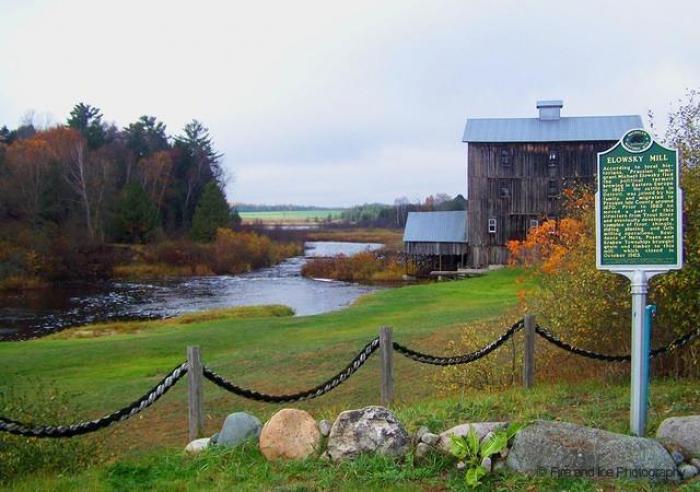
While working their trade, they noticed the great sailing schooners coming down from the north with cargoes of lumber. Many of the sawn boards were over two feet wide, and twenty some feet long. They wondered how large the tree must have been. Where they were from in Europe, all the large growth trees had been cut down centuries ago. In time, they saw an opportunity to ride back north on one of the schooners that would take flour, sugar, salt, the staples, back to the lumberjacks at their camps up north.
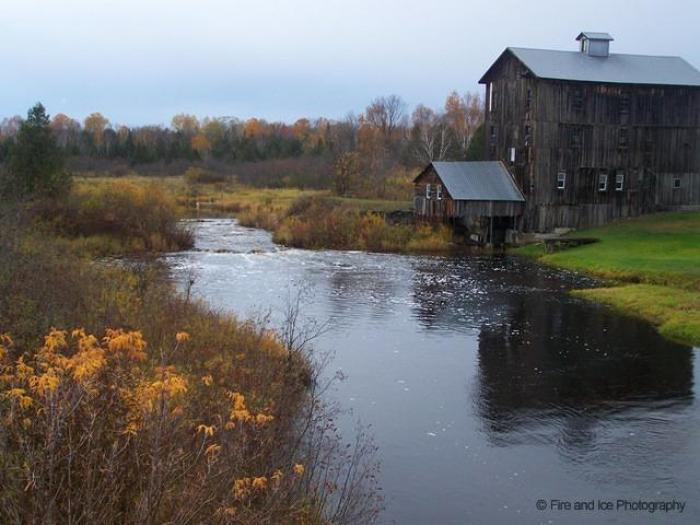
Their ship docked at Rogers City, in northeast Lower Michigan, on the shore of Lake Huron. Back in those days, the big opportunity to meet, and socialize, was at the boat harbor. Whenever a ship would arrive, day or night, half the towns population would be down at the docks to greet the passengers. So the two young men, John Miller and Michael Elowsky, were greeted by many of the townsfolk. One in particular was a Mr. Lipski, an old miller. He looked the two young guys over, and somehow he convinced the guys to come and see his grist mill on the Trout River, just a little north of there.
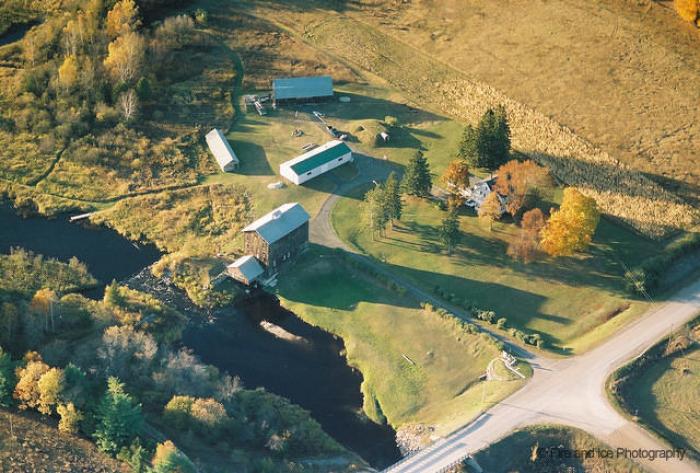
Mr. Lipski was old, ready to retire, and hoped he could persuade the guys to take over his business, and become millers. Apparently, he was successful. The two young men went back to Detroit, sold their leather business, and then returned to Rogers City to work with Mr. Lipski. Time passed, they learned a new trade, and they became successful as millers. However, before Mr. Lipski left them, he took them to his favorite spot in the country, by the little Village of Posen where the north branch of the Thunder Bay River was flowing.
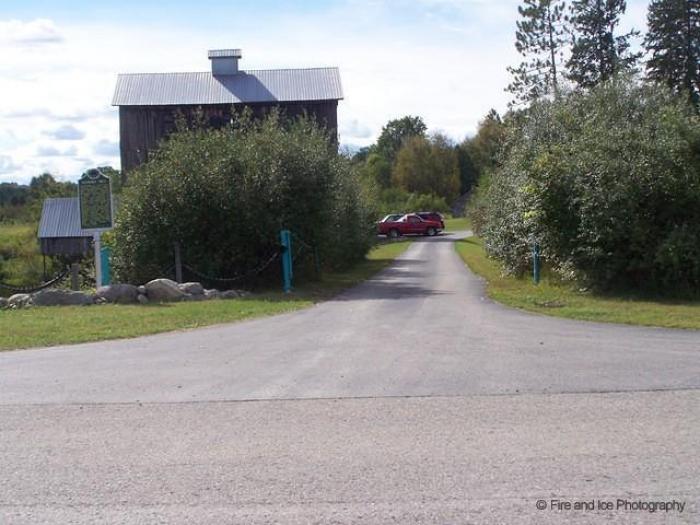
There, through the minds eye of an experienced old miller, Mr. Lipski showed them how the river made a sharp right turn there at a place where a log dam could be constructed, impounding water back into a lowland area, thus creating the power source for a large grist mill. He further explained, how under President Lincoln's Homestead Act of 1865, one could obtain up to four, forty acre parcels of land at no cost. The young men were amazed, nothing like that was possible where they came from! Mr. Lipski further explained how they could proceed, and their dream was born.
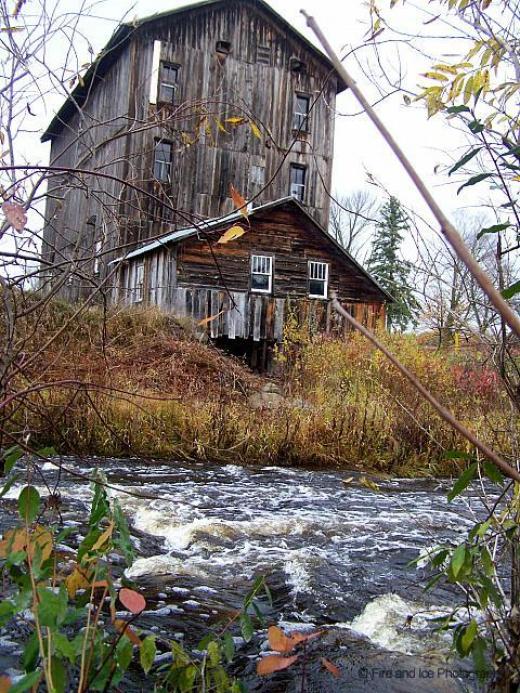
They obtained two forties on one side of section 30, and the two on the other side in section 31. They cleared the land, built a home, and began construction on the dam, and mill. They moved the equipment from their old Trout River location to the new site which they named "North Branch Mill." By 1870 they were up and running, providing milling service for the local farmers.
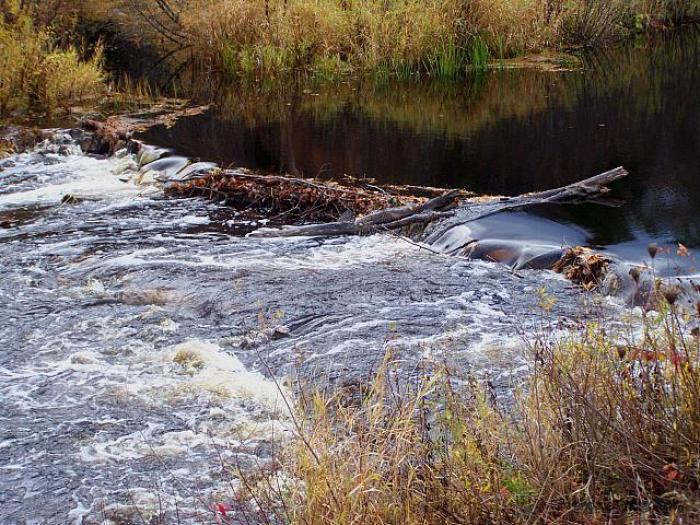
One of the many outstanding characteristics of these two young men was their quest for technology. How could they improve in their new trade? At that point in time, all the latest and greatest advancements in the milling industry were out East. Cities like Boston, Pittsburgh and New York, had companies that were making great advances in equipment and the processing of grain commodities. The guys somehow stayed in touch with that and made dramatic changes at their new mill.

First they replaced the one piece, course American mill stone, with a much larger, multi-piece French buhr stone. This increased production, and gave a much finer grade of flour. The also installed horizontal turbines, under water at the dam. These were far more efficient than the common overshot wheels that most mills used. The underwater turbines had adjustable vanes, making their speed more controllable and they stayed free of ice, which formed on the overshot wheels in the late fall and early winter.
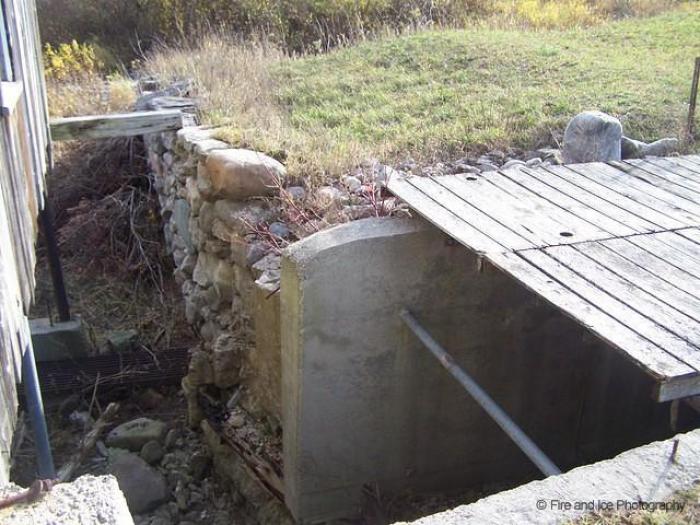
These advances allowed them to grind much later into the winter season, and have a quicker turnaround for the farmer. With the industrial revolution developing at the turn of the century, steel rollers were the latest advancement in the milling process.
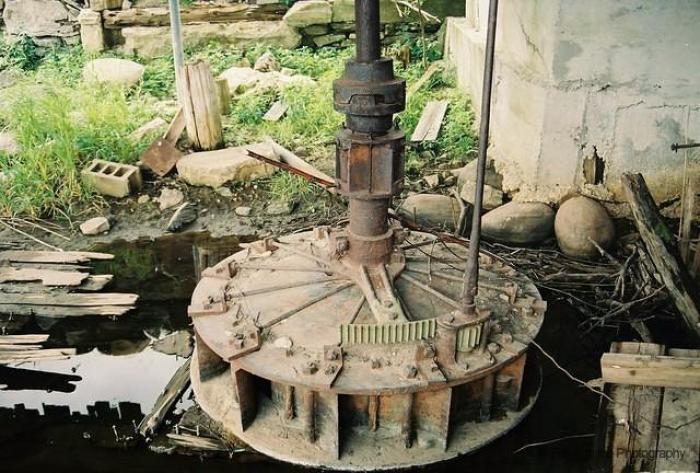
For reasons unclear to local historians, Michael and John parted company. Michael stayed at the North Branch Roller Mill, and John moved elsewhere. Michael had a very large family, many of whom developed similar type mills in the areas of Wolf Creek and Hillman. One of Michael's sons, Emil went on to continue with the improvements there at the North Branch Mill.
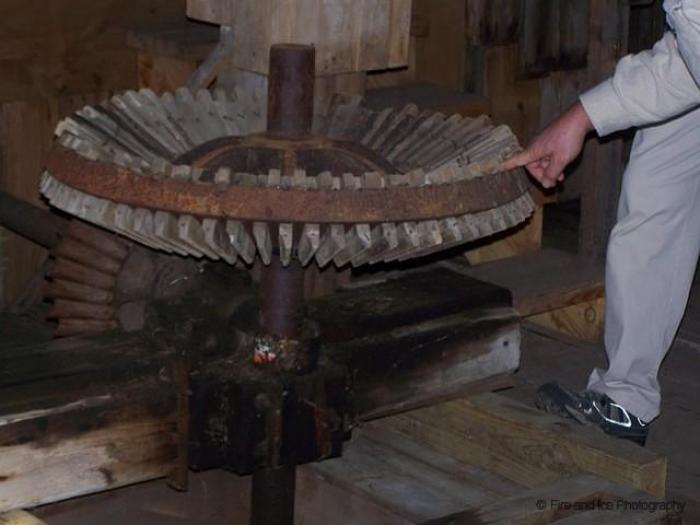
One problem Emil had was daylight. As the crops came in from the fall harvest for him to process, the working daylight hours diminished. The dust from milling process is explosive, so illumination from oil lamps would not be an option. Jesse Besser had an idea for Emil. Jesse had a friend down state who was experimenting with electrical incandescent lamps. These lamps were enclosed in glass, and emitted a bright light when D.C. electricity passed through a resistance filament. Emil was intrigued. Jesse then introduced him to Tom Edison. Soon with Edison?s help, Emil obtained a D.C. generator, some lamps and wire. His mill was now able to run 24/7.
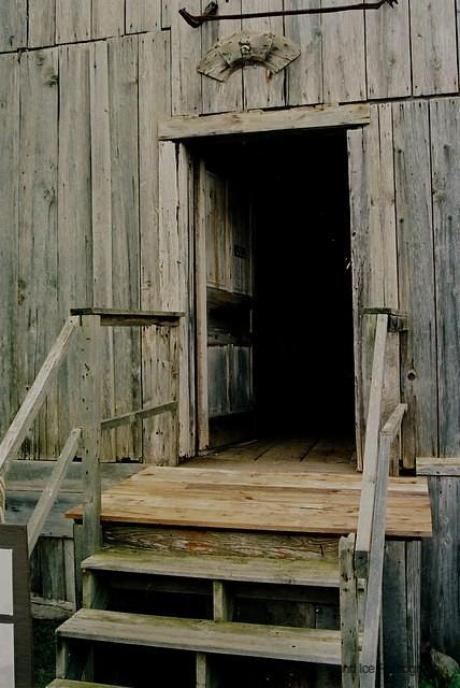
WOW, did production increase now! Farmers from a four county area would now bring their commodities to him to process because of an even quicker turn around. Emil Elowsky had the only electric lights in the area, almost 20 years before the Rural Electric Authority (R.E.A.) was planting poles and stringing wire in the late 1920's for the general population.

Emil, as you can imagine went on to be very successful as a miller. He had a larger family than his father Michael. Many of the sons went on to operate other area mills learning their trade there at the North Branch Roller Mill. However, in time, even larger mills were built down state in the Saginaw area. Large, A.C. electric motors became the power source, rather than water power. Gradually, as area farms became larger, commodities went by rail down state for processing.
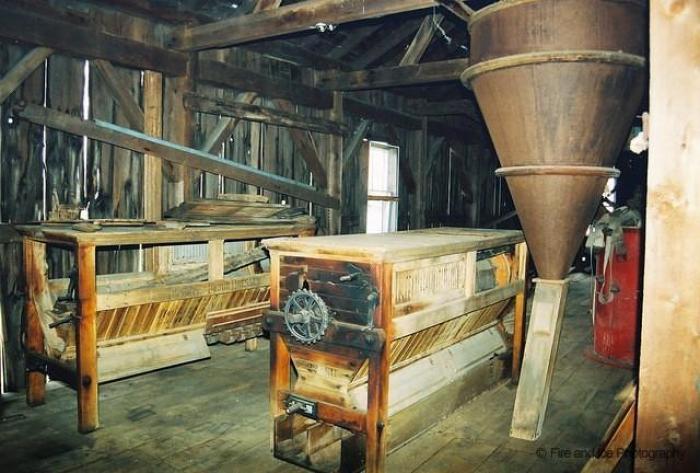
At that time, bolts of silk were imported from the orient to process flour in the dressing machines . However, silk was expensive and it would get holes in it from use. The Industrial Revolution was now developing a product where steel was being drawn into strands, woven together, creating wire cloth. Today we call in screen. The Wolf Company out in Pennsylvania was experimenting with this wire cloth. They arranged trays of it inside a large box that was suspended by wooden dowel rods. On top of the box, a large gear driven eccentric, caused the box to oscillate, as the ground wheat passed through the screens, the result was flour. The wire cloth was far more durable than silk fabric, and again greater production resulted.
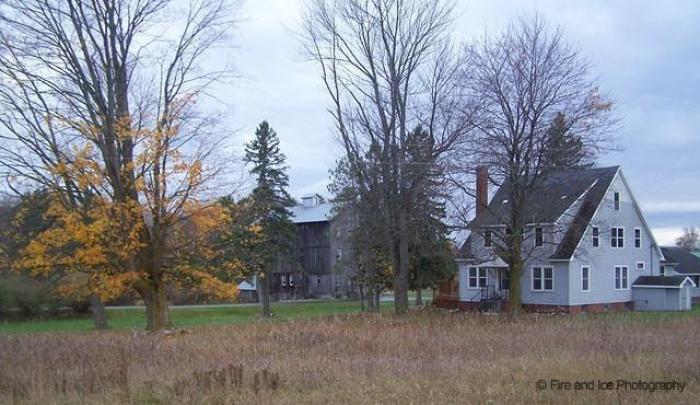
As a second generation miller, Emil Elowsky went on to become an even more successful businessman. He built a new six bedroom house next to his father's old one. He bought a "new fangled" automobile from a man in Alpena who called it "The Alpena Flyer". This man was Jesse Besser, who went on to start the very successful Besser Concrete Block Company. We can only imagine how the two men must have talked about their work, sharing concerns, problems and successes in their endeavors.
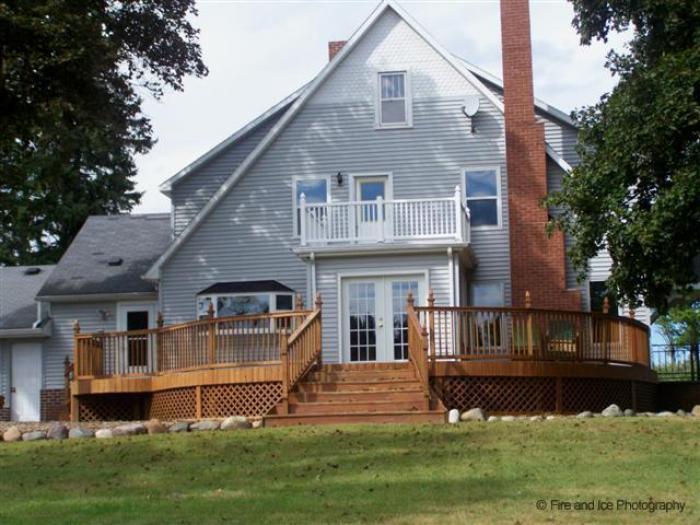
One of Emil's sons, Edvin continued to operate the North Branch Roller Mill through the 1940's and 50's for small local farmers. Ed also worked at the local cement plant, so operating the roller mill became a part time job for him. During the winter of 1963-4, a great amount of snow fell, so with the spring melt, a very great run-off on the river caused the original log/spike dam to collapse. Ed chose not to rebuild it.
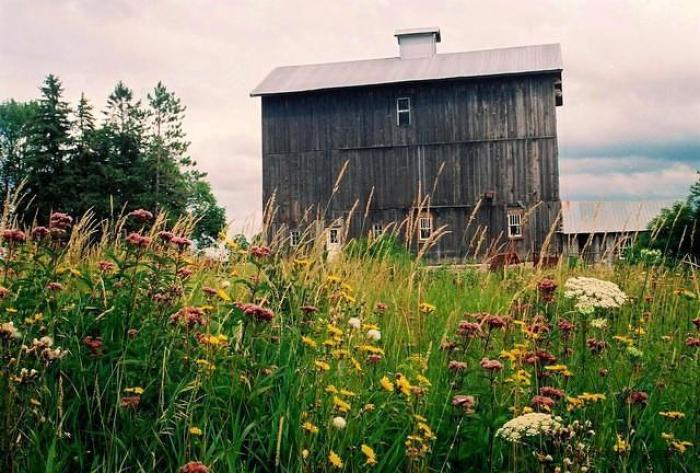
The great run off also wiped out the saw mill that the family had across the river on the south bank. When the door of the mill closed in October of 1963, that became the last time it would operate. All the equipment was left intact and remains to this day.
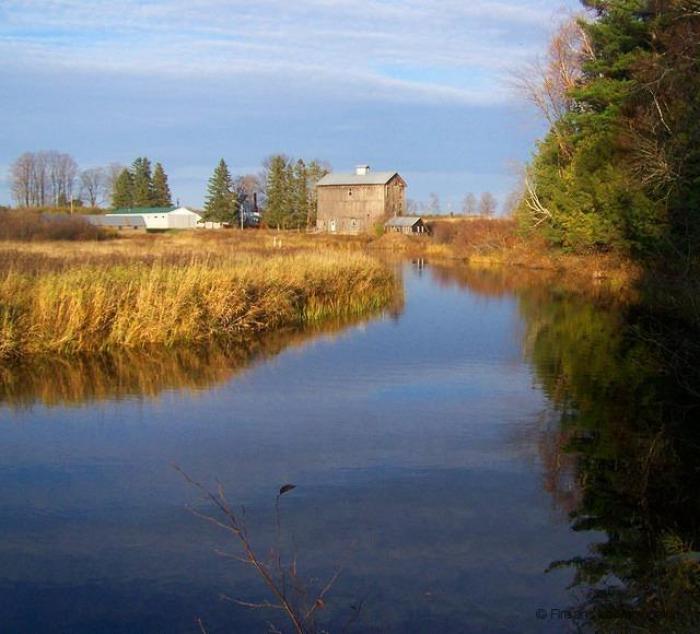
The mill lay silent for over 10 years. In the spring of 1973, a retired electrical engineer bought the 100 acre property. He repaired the foundation of the mill, pouring many yards of hand mixed concrete, in some very difficult to reach places. A new tin roof replaced the old cedar shingles. Great effort was made to keep things original looking. The engineer and his wife enjoyed the property for many years, repairing, rebuilding, and caring for this very special property.

The engineer and his wife enjoyed the property for many years, repairing, rebuilding, and caring for this very special property. Click on the website at the top of the pictures to get to the realty site for the mill, which is now for sale, along with 9.10 acres of land, six bedroom house, and all outbuildings, for $245,000.
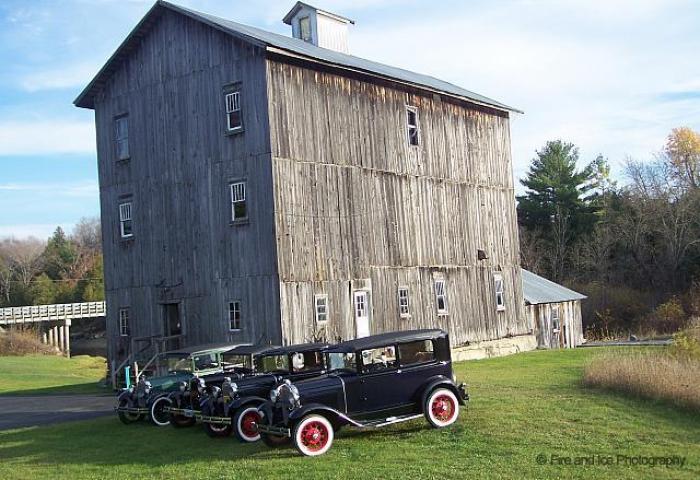
A Ford Model A Touring Club has used the mill for a photo location. The information contained in this webpage is "A Chronicle of Elowsky's Mill" by Gary Tiffany, the present owner, and is used along with the photos by Doug Houseworth, with permission from Mr. Houseworth. GPS: 45D 13.26'N, 83D 44.42'W ele. 719'/219 meters Polaski Quadrangle